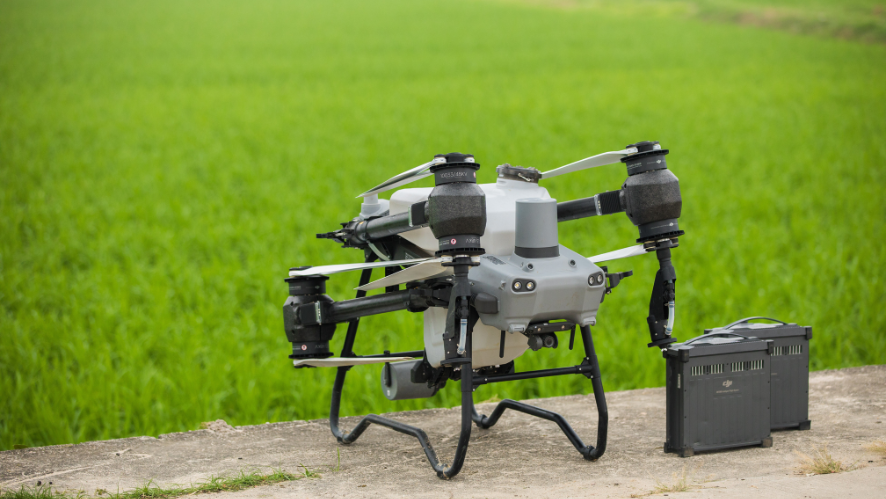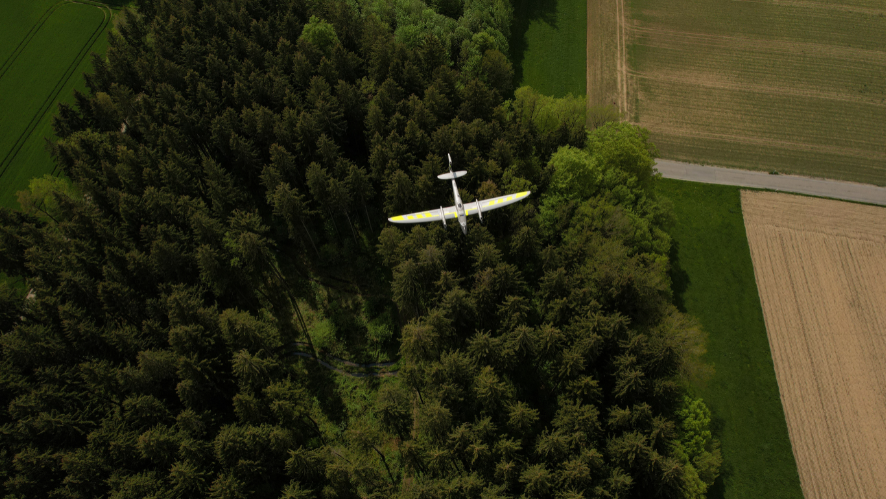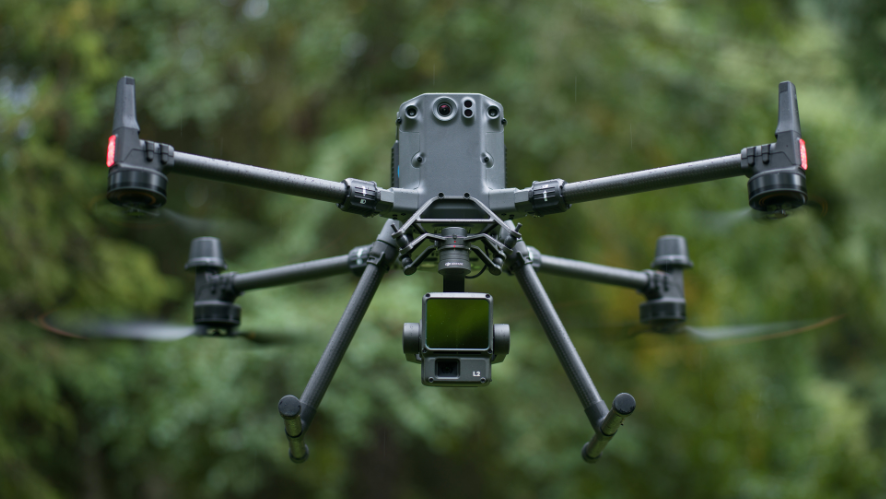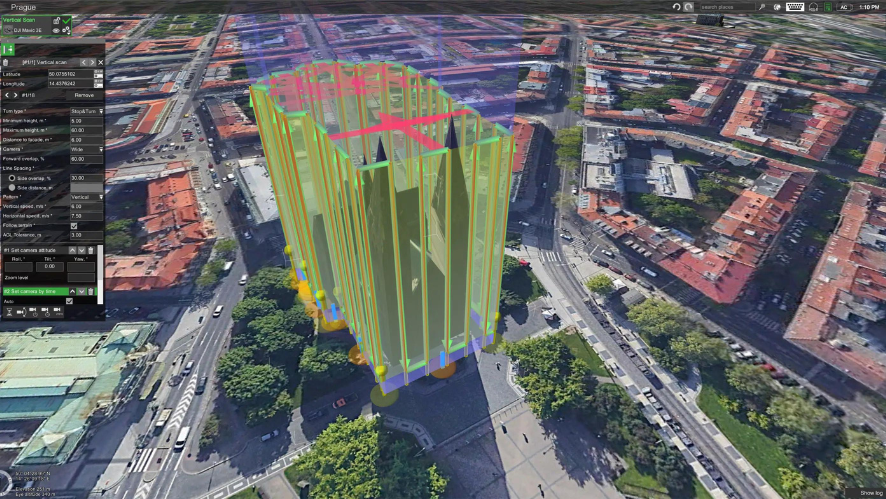MAVIC 3 MULTISPECTRAL
See more, work smarter.
Effective aerial surveying needs to see the invisible. That’s why Mavic 3 Multispectral has two ways of viewing. It combines an RGB camera with a multispectral camera to scan and analyze crop growth with total clarity. Agricultural production management requires precision and data, and Mavic 3M offers both.
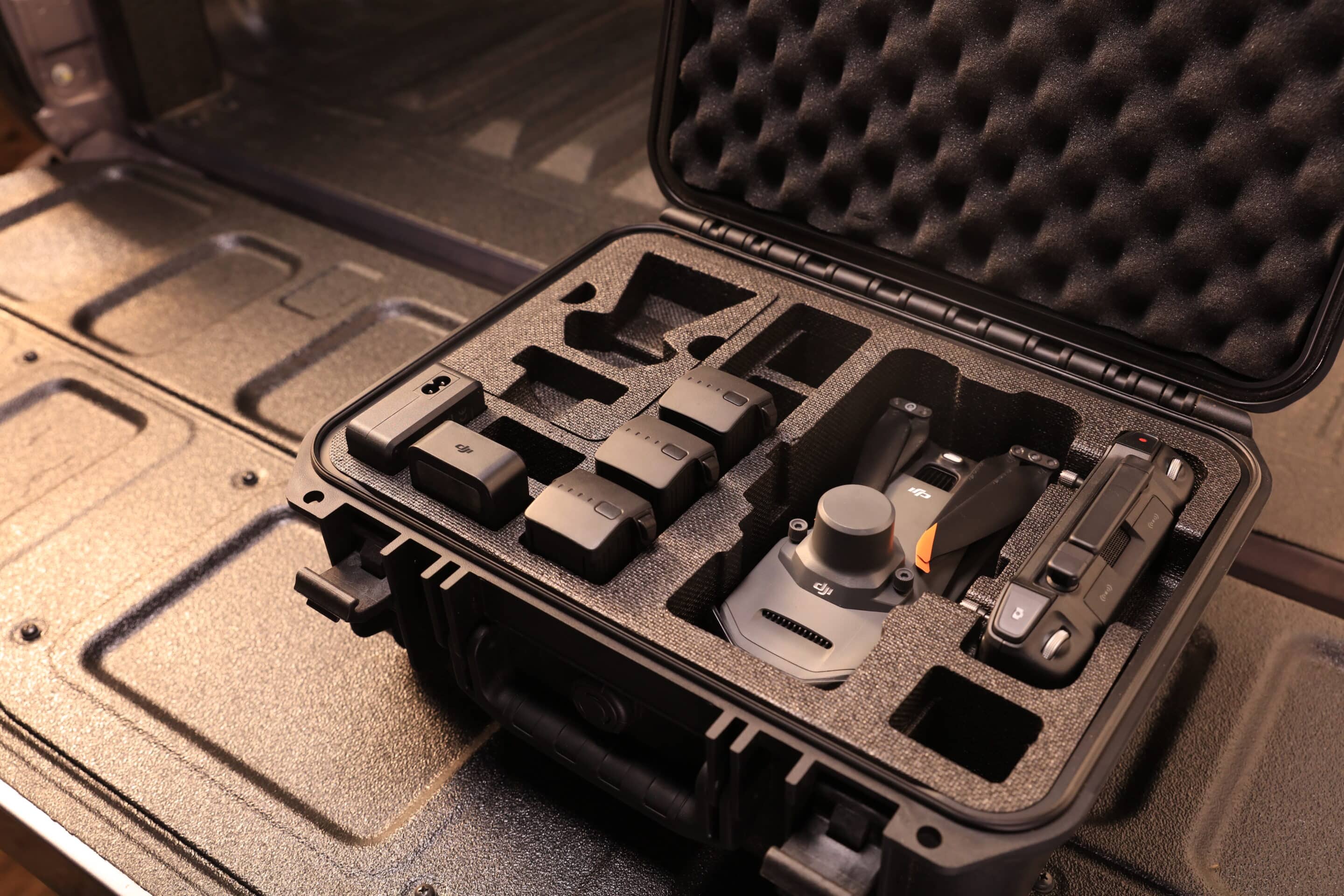
Compact and portable: Foldable for easy storage.
Multispectral camera: 4 × 5 MP G/R/RE/NIR
RGB camera: 20 MP 4/3 CMOS, mechanical shutter
Safe and stable: Omnidirectional obstacle avoidance.15 km transmission distance.
Precise positioning: RTK positioning at centimeter level. Time synchronization at microsecond level.
Efficient aerial topography: Up to 200 hectares per flight.
5MP multispectral camera
Near infrared (NIR): 860 nanometer ± 26 nanometer.
Red (R): 650 nm ± 16 nm.
Red border (RE): 730 nm ± 16 nm.
Green (G): 560 nm ± 16 nm.
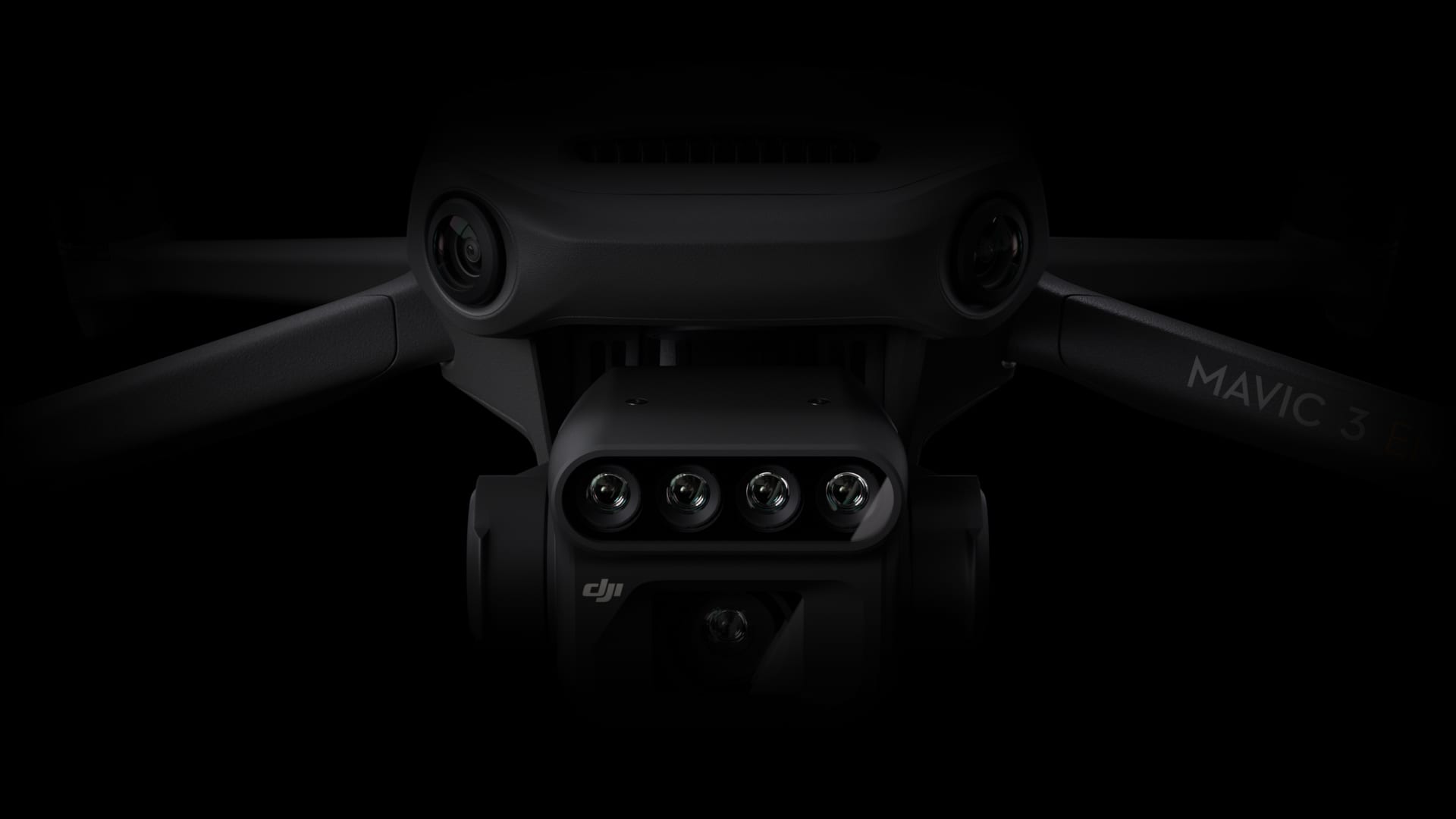
HIGHLY INTEGRATED IMAGING SYSTEM
Newly upgraded imaging system with a 20 MP RGB camera and four 5 MP multispectral cameras (green, red, red edge and near infrared).
Applications: high precision aerial surveying, crop growth monitoring and natural resource surveys.
Sunlight sensor
The built-in sunlight sensor captures solar radiation and records it in an image file, allowing light compensation of the image data during 2D reconstruction.
This results in more accurate NDVI results, as well as greater accuracy and consistency of the acquired data over time.
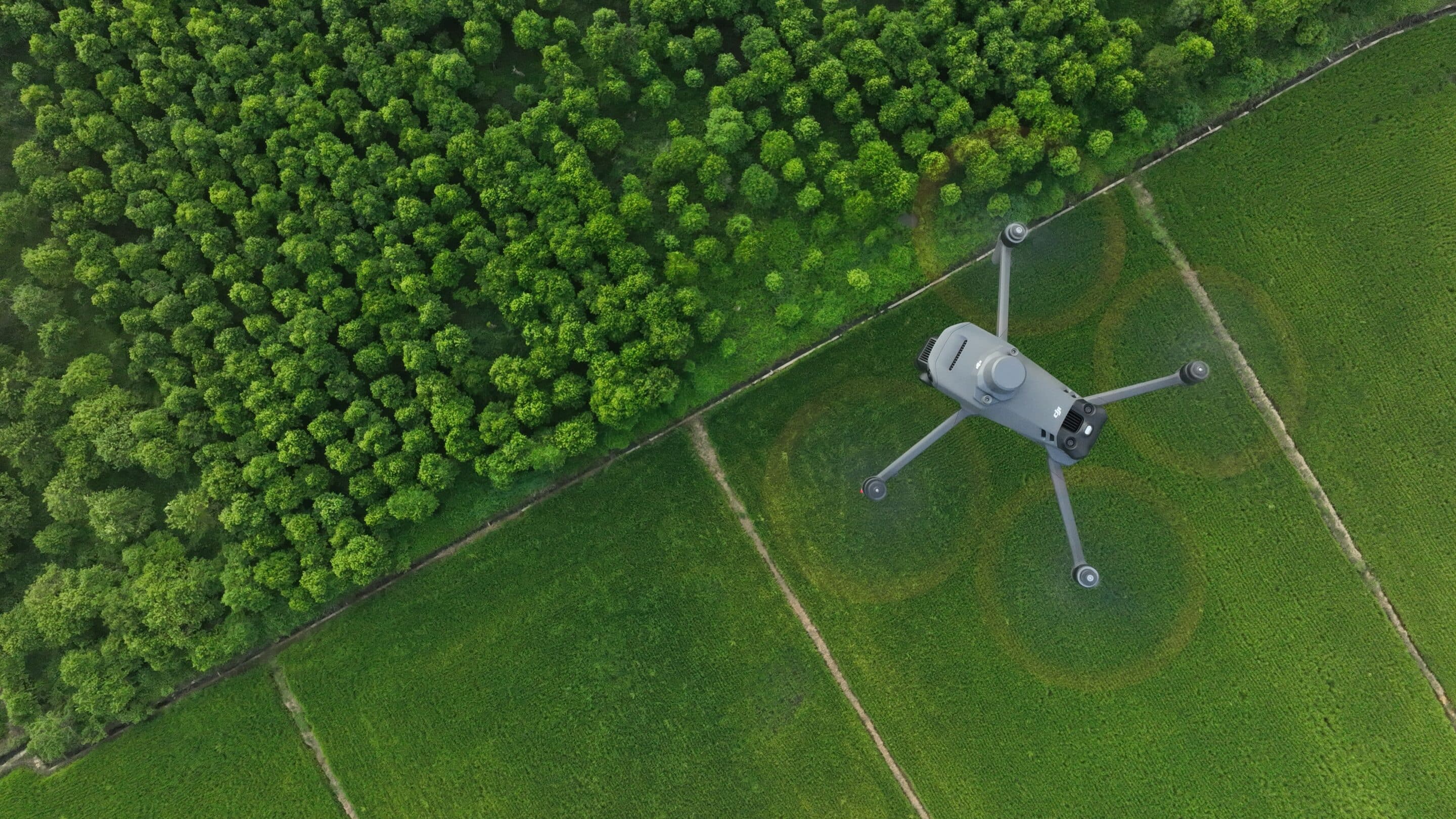
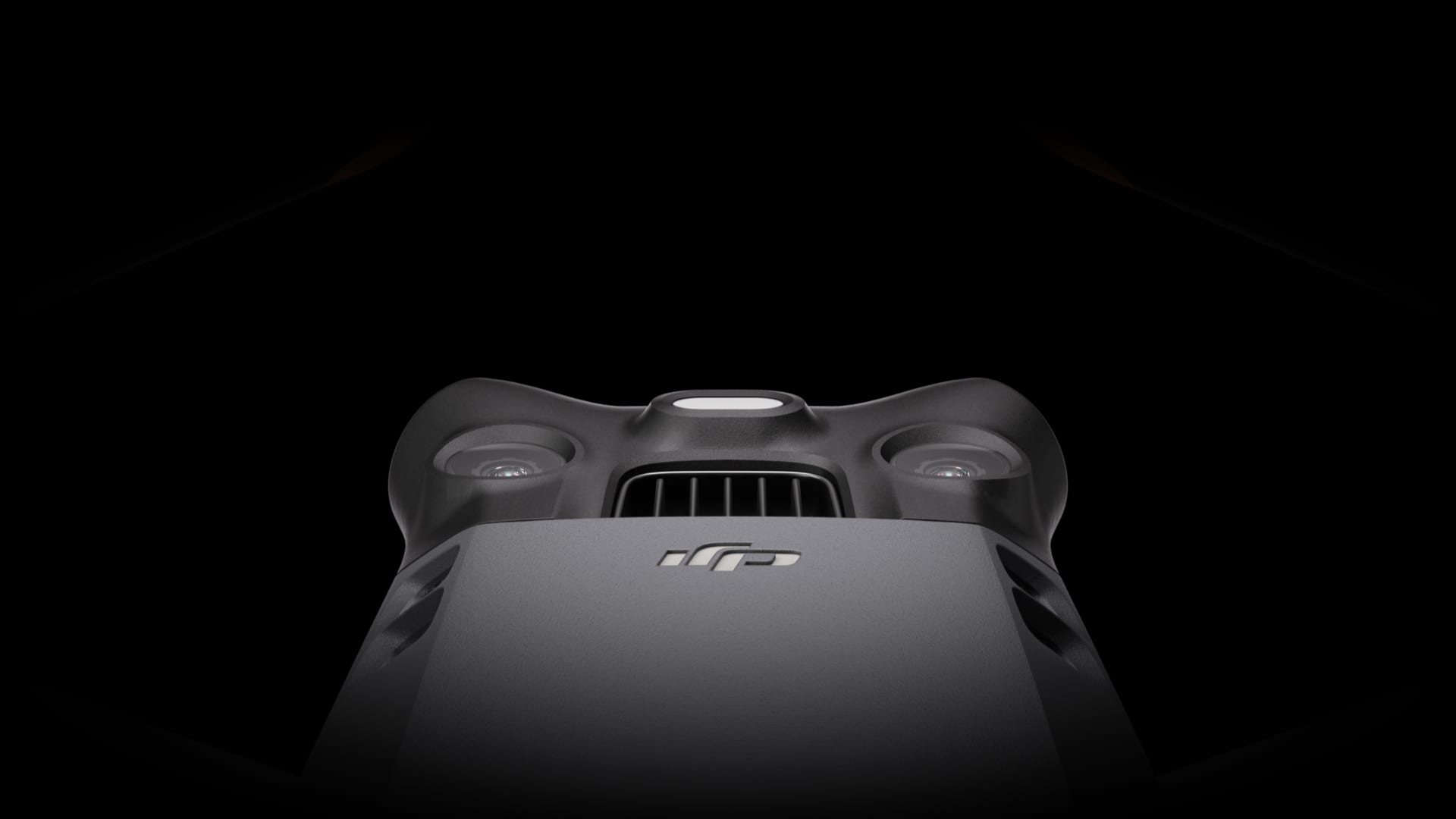
INTEGRATED SPECTRAL SUNLIGHT SENSOR
The P4M has an integrated spectral sunlight sensor on top to capture solar radiation, maximising the accuracy and consistency of the data captured.
Accurate images that capture every pixel
Mavic 3M with RTK module for centimeter-level positioning.
The flight control, camera and RTK module are synchronized within microseconds to accurately capture the location of each camera’s imaging center.
This allows Mavic 3M to perform high-precision aerial topographic surveys without using ground control points.

Efficient and reliable battery life
Ultra-long battery life, fast bursts:
- 43 minutes (cruising time)
- 200 hectares (A single flight can complete mapping operations over an area of 200 hectares).
Stable signal, smooth image transmission
The O3 transmission integrates two transmit and four receive signals to support ultra-long transmission distances of 15 km.

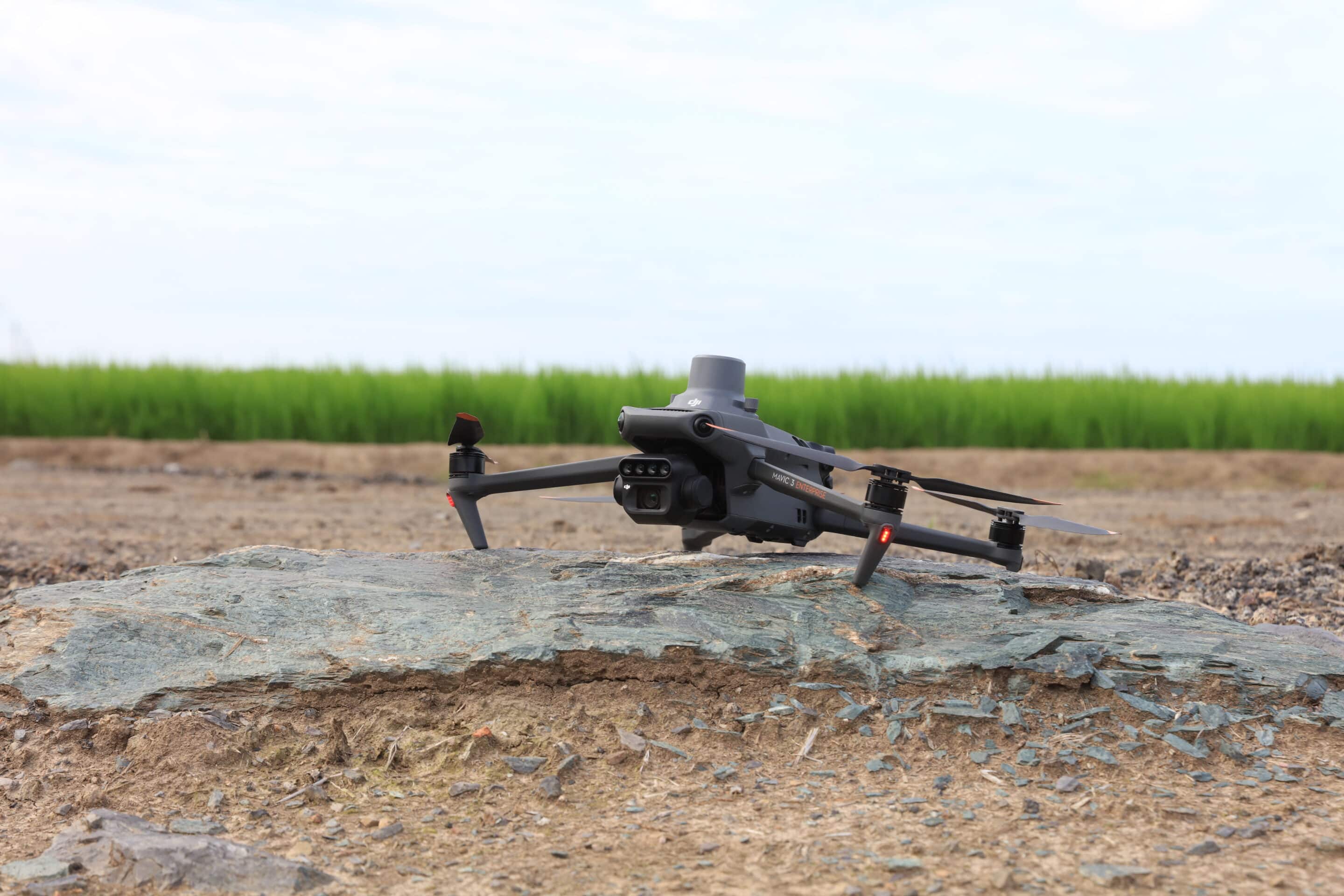
Omnidirectional obstacle detection
The aircraft has multiple wide field-of-view vision sensors that accurately detect obstacles in all directions for omnidirectional obstacle avoidance.
Aerial terrain-following topography can be easily performed in steeply sloping landscapes.
Applications (Orchard mapping)
Mavic 3M enables aerial inspection of orchard ground tracking, even on sloping landscapes. Together with DJI Terra or DJI SmartFarm Platform to reconstruct high-resolution orchard maps, automatically identify the number of trees, distinguish trees from other obstacles or objects, and generate three-dimensional operation routes for agricultural drones, making operations safer and more efficient.
Variable Rate Application Guide
For rice fertilization, cotton growth regulation and potato foliar fertilizer spraying, the 3M Mavic is used for multispectral imaging of crops. DJI Terra or DJI SmartFarm platform
can generate NDVI and other vegetation index maps, capturing differences in crop potential and generating prescription maps that allow agricultural drones to run variable rate applications. Ultimately, this allows users to reduce costs, increase performance and protect the environment.
Intelligent field scanning
Field explorer images can be uploaded to the DJI SmartFarm platform.
in real time over a 4G network. It can find anomalies such as emergence deficiencies, weed pressure and crop lodging in a timely manner. It can also perform intelligent analysis, such as cotton seedling identification and rice production testing.
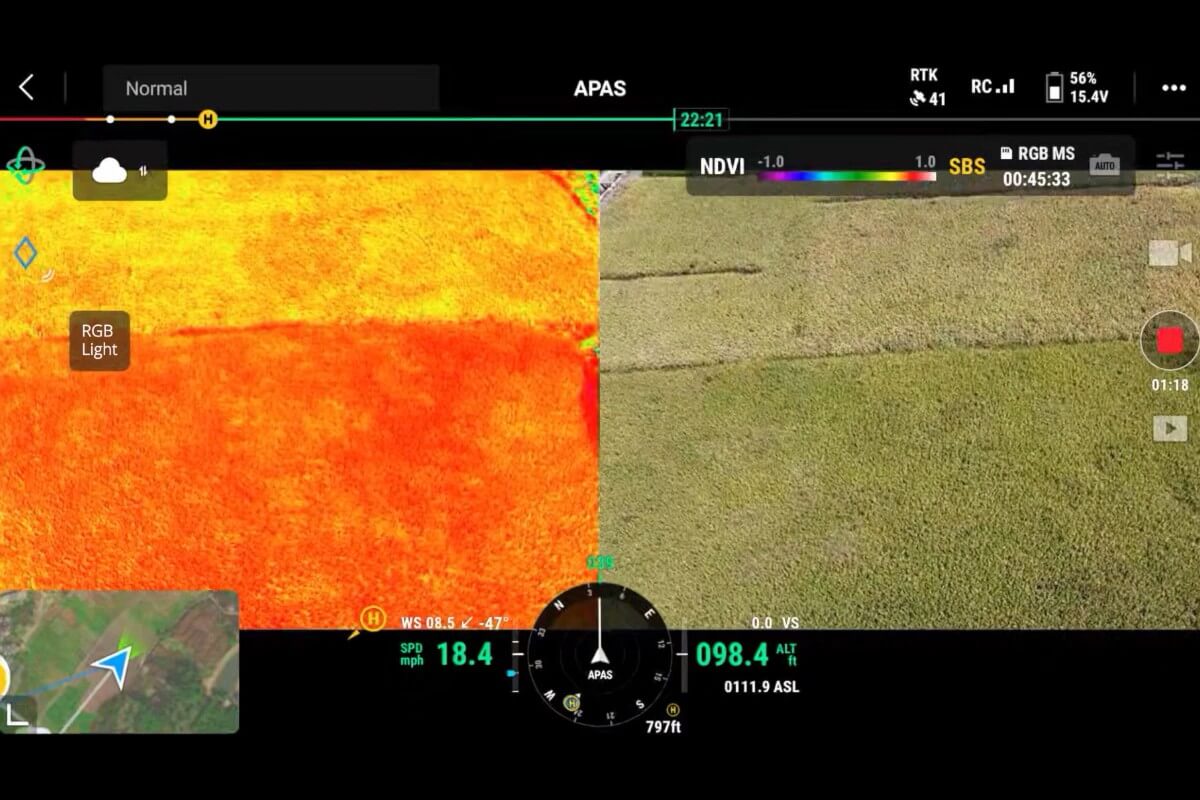
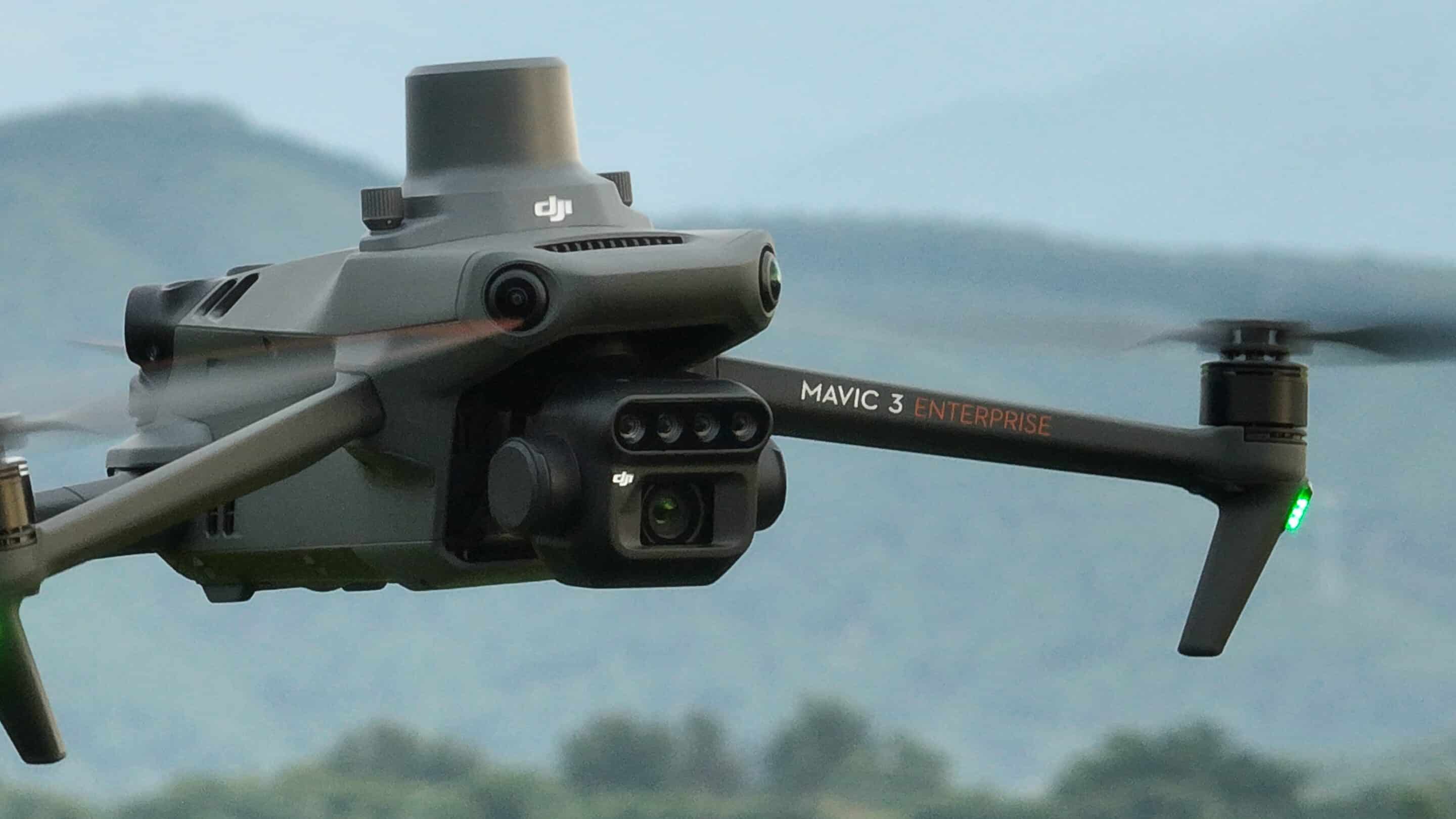
Environmental Monitoring and Natural Resources Survey
The 3M Mavic can also be used in environmental and natural resource studies, such as water enrichment monitoring, forest distribution studies, urban green space studies and more.
Monitoring of water enrichment.
Surveys of urban green areas.
FREQUENT QUESTIONS
PRODUCT
Product Frequently Asked Questions
https://ag.dji.com/mavic-3-m
GIMBAL CAMERAS
Frequently Asked Questions about Stabilizer Cameras
Gimbal cameras
Visible focal length: 12.29 mm (focal length); 24 mm (35 mm equivalent focal range)
Remote Controller
Frequently Asked Questions about Remote Control and Transmission
Remote control and transmission
CE: 8 km
SRRC: 8 km
MIC: 8 km
* The above data were measured by the aircraft in an unobstructed and uninterfered outdoor environment. Displays the farthest communication distance for non-RTH one-way flights under each standard. During flight, pay attention to RTH reminders in the DJI Pilot 2 app.
BATTERY
Frequently Asked Questions about Batteries
Battery charger
When connected directly to the aircraft via the DJI USB-C 100W power adapter, it takes approximately 1 hour and 20 minutes to fully charge a smart flight battery.
* This data was measured using DJI Mavic 3M in windless conditions at sea level at a constant speed of 36 kph until the battery reached 0%. Use it as a reference only. Pay attention to the RTH prompts in the DJI Pilot 2 app when flying.
TOPOGRAPHY AND AERIAL APPLICATION
Frequently Asked Questions about Aerial Surveying and Aerial Application
Topography and aerial application
Flight speed: maximum horizontal flight speed is 21 m/s, minimum horizontal flight speed is 1 m/s (no wind, near sea level).
Multispectral camera (orthophoto): (H/21.7) cm/pixel
ACCESSORY
Frequently Asked Questions about Accessories
SPECS
Access to technical specifications
| Mavic 3 Multispectral | |||||||
|
Net Weight (with propellers and RTK module)
|
951 g
|
||||||
|
Max Takeoff Weight
|
1,050 g
|
||||||
|
Dimensions (Folded/Unfolded)
|
Folded (without propellers): 223×96.3×122.2 mm (Length×Width×Height)
Unfolded (without propellers): 347.5×283×139.6 mm (Length×Width×Height) |
||||||
|
Diagonal Length
|
Diagonal: 380.1 mm
|
||||||
|
Max Ascent Speed
|
6 m/s (Normal Mode)
8 m/s (Sport Mode) |
||||||
|
Max Flight Speed (at sea level, no wind)
|
15 m/s (Normal Mode)
Flying forward: 21 m/s, flying sideways: 20 m/s, flying backwards: 19 m/s (Sport mode) |
||||||
|
Max Wind Speed Resistance
|
12 m/s
|
||||||
|
Max Take-off Altitude Above Sea Level
|
6000 m (without a payload)
|
||||||
|
Max Flight Time (without wind)
|
43 minutes
|
||||||
|
Max Hover Time (without wind)
|
37 minutes
|
||||||
|
Max Flight Distance
|
32 km
|
||||||
|
Max Tilt Angle
|
30° (Normal Mode)
35° (Sport Mode) |
||||||
|
Max Angular Velocity
|
200°/s
|
||||||
|
GNSS
|
GPS + Galileo + BeiDou + GLONASS (GLONASS is supported only when RTK module is enabled)
|
||||||
|
Hovering Accuracy Range
|
Vertical: ±0.1 m (Vision Positioning enabled); ±0.5 m (GNSS Positioning enabled); ±0.1 m (D-RTK enabled)
Horizontal: ±0.3 m (Vision Positioning enabled); ±0.5 m (HD Positioning enabled); ±0.1 m (RTK enabled) |
||||||
|
Operating Temperature
|
-10° to 40° C (14° to 104° F)
|
||||||
|
Internal Storage
|
N/A
|
||||||
|
Motor Model Number
|
2008
|
||||||
|
Propeller Model Number
|
9453F Enterprise Edition
|
||||||
|
Light Sensor
|
Built-in module
|
||||||
| Gimbal | |||||||
|
Stabilization System
|
3-axis mechanical gimbal (tilt, roll, pan)
|
||||||
|
Mechanical Range
|
Tilt: -135° to 45°
Roll: -45° to 45° Pan: -27° to 27° |
||||||
|
Controllable Range
|
Tilt: -90° to 35°
Pan: Uncontrollable |
||||||
|
Max Control Speed (tilt)
|
100°/s
|
||||||
|
Angular Vibration Range
|
±0.007°
|
||||||
| Sensing System | |||||||
|
Sensing System Type
|
Omnidirectional binocular vision system, with an infrared sensor at the bottom of the aircraft
|
||||||
|
Forward
|
Distance Measuring Range: 0.5 m to 20 m
Detection Range: 0.5 m to 200 m Effective Obstacle Avoidance Speed: Flight Speed ≤15 m/s FOV: Horizontal 90°, vertical 103° |
||||||
|
Backward
|
Distance Measuring Range: 0.5 m to 16 m
Effective Obstacle Avoidance Speed: Flight speed ≤12 m/s FOV: Horizontal 90°, vertical 103° |
||||||
|
Lateral
|
Distance Measuring Range: 0.5 m to 25 m
Effective Obstacle Avoidance Speed: Flight speed ≤15 m/s FOV: Horizontal 90°, vertical 85° |
||||||
|
Upward
|
Distance Measuring Range: 0.2 m to 10 m
Effective Obstacle Avoidance Speed: Flight Speed ≤6 m/s FOV: Front and rear 100°, left and right 90° |
||||||
|
Downward
|
Distance Measuring Range: 0.3 m to 18 m
Effective Obstacle Avoidance Speed: Flight speed ≤6 m/s FOV: Front and rear 130°, left and right 160° |
||||||
|
Operating Environment
|
Front, Rear, Left, Right, Above: Surfaces with clear patterns and adequate lighting (> 15 lux, environments with normal indoor fluorescent light exposure)
Below: Surfaces with diffuse reflection material and a reflectivity of >20% (such as walls, trees, people, etc.); Adequate lighting (>15 lux, environments with normal indoor fluorescent light exposure) |
||||||
| RGB Camera | |||||||
|
Image Sensor
|
4/3 CMOS
Effective Pixels: 20 MP |
||||||
|
Lens
|
FOV: 84°
Equivalent focal length: 24 mm Aperture: f/2.8 to f/11 Focus: 1 m to ∞ |
||||||
|
ISO Range
|
100-6400
|
||||||
|
Shutter speed
|
Electronic shutter: 8-1/8000 s
Mechanical shutter: 8-1/2000 s |
||||||
|
Max Image Size
|
5280×3956
|
||||||
|
Photo Shooting Mode
|
Single shot: 20 MP
Timelapse: 20 MP JPEG: 0.7/1/2/3/5/7/10/15/20/30/60 s JPEG + RAW: 3/5/7/10/15/20/30/60 s Panorama: 20 MP (original material) |
||||||
|
Video Resolution
|
H.264:
4K: 3840×2160@30fps FHD: 1920×1080@30fps |
||||||
|
Max Video Bitrate
|
4K: 130Mbps
FHD: 70Mbps |
||||||
|
Supported File System
|
exFAT
|
||||||
|
Image format and Video Format
|
JPEG/DNG (RAW)
MP4 (MPEG-4 AVC/H.264) |
||||||
| Multispectral Camera | |||||||
|
Image Sensor
|
1/2.8-inch CMOS, effective pixels: 5 MP
|
||||||
|
Lens
|
FOV: 73.91° (61.2° x 48.10°)
Equivalent focal length: 25 mm Aperture: f/2.0 Focus: Fixed Focus |
||||||
|
Multispectral Camera Band
|
Green (G): 560 ± 16 nm;
Red (R): 650 ± 16 nm; Red Edge (RE): 730 ± 16 nm; Near infrared (NIR): 860 ± 26 nm; |
||||||
|
Gain Range
|
1x-32x
|
||||||
|
Shutter Speed
|
Electronic Shutter: 1/30~1/12800 s
|
||||||
|
Max Image Size
|
2592×1944
|
||||||
|
Image Format
|
TIFF
|
||||||
|
Video Format
|
MP4 (MPEG-4 AVC/H.264)
|
||||||
|
Photo Shooting Mode
|
Single shot: 5 MP
Timelapse: 5 MP TIFF: 2/3/5/7/10/15/20/30/60 s |
||||||
|
Video Resolution
|
H.264
FHD: 1920 x 1080@30fps Video content: NDVI/GNDVI/NDRE |
||||||
|
Max Video Bitrate
|
Stream: 60 Mbps
|
||||||
| Video Transmission | |||||||
|
Video Transmission System
|
DJI O3 Image Transmission Industry Edition
|
||||||
|
Live View Quality
|
Remote Controller: 1080p/30fps
|
||||||
|
Operating Band
|
2.400-2.4835 GHz
5.725-5.850 GHz |
||||||
|
Max Effective Signal Distance (Unobstructed, No interference)
|
FCC: 15 km
CE: 8 km SRRC: 8 km MIC: 8 km |
||||||
|
Max Transmission Distance (Obstructed)
|
Strong Interference (urban landscapes, residential areas, etc.): 1.5-3 km (FCC/CE/SRRC/MIC)
Medium Interference (suburban landscapes, city parks, etc.): 3-9 km (FCC), 3-6 km (CE/SRRC/MIC) Weak Interference (remote fields, open farmland, etc.): 9-15 km (FCC), 6-8 km (CE/SRRC/MIC) |
||||||
|
Max Download Speed
|
15 MB/s (with DJI RC Pro Industry Edition)
|
||||||
|
Latency (depending on environment and mobile device)
|
Approximately 200 milliseconds
|
||||||
|
Antennas
|
4 antennas, 2 transmitting and 4 receiving
|
||||||
|
Transmitter Power (EIRP)
|
2.4 GHz: <33 dBm (FCC), <20 dBm (CE/SRRC/MIC)
5.8 GHz: <33 dBm (FCC), <30 dBm (SRRC), <14 dBm (CE) |
||||||
|
Other
|
Supports the DJI Cellular module
|
||||||
| Storage | |||||||
|
Supported microSD Cards
|
Aircraft:
Please use a memory card with a speed rating of V30 or higher, or use a memory card from the recommended list |
||||||
|
Recommended microSD Cards
|
Remote Controller: Aircraft: |
||||||
| RTK Módule | |||||||
|
Dimensions
|
50.2×40.2×66.2 mm (Length×Width×Height)
|
||||||
|
Weight
|
24±2 g
|
||||||
|
Interface
|
USB-C
|
||||||
|
Power
|
Approximately 1.2 watts
|
||||||
|
RTK Position Accuracy
|
Fixed RTK:
Horizontal: 1 cm + 1 ppm; Vertical: 1.5 cm + 1 ppm |
||||||
| DJI RC Pro Enterprise Edition | |||||||
|
Image Transmission System
|
DJI O3 Image Transmission Industry Edition
|
||||||
|
Max Effective Signal Distance (Unobstructed, No interference)
|
FCC: 15 km
CE: 8 km SRRC: 8 km MIC: 8 km |
||||||
|
Operating Band of Image Transmission
|
2.400-2.4835 GHz
5.725-5.850 GHz |
||||||
|
Antennas
|
4 antennas, 2 transmitting and 4 receiving
|
||||||
|
Operating Band of Image Transmission and Transmitter Power (EIRP)
|
2.4 GHz: <33 dBm (FCC); <20 dBm (CE/SRRC/MIC)
5.8 GHz: <33 dBm (FCC); <14 dBm (CE); <23 dBm (SRRC) |
||||||
|
Wi-Fi Protocol
|
802.11 a/b/g/n/ac/ax
Support 2×2 MIMO Wi-Fi |
||||||
|
Wi-Fi Operating Band
|
2.400-2.4835 GHz
5.150-5.250 GHz 5.725-5.850 GHz |
||||||
|
Wi-Fi Operating Band and Transmitter Power (EIRP)
|
2.4 GHz: <26 dBm (FCC); <20 dBm (CE/SRRC/MIC)
5.1 GHz: <26 dBm (FCC); <23 dBm (CE/SRRC/MIC) 5.8 GHz: <26 dBm (FCC/SRRC); <14 dBm (CE) |
||||||
|
Bluetooth Protocol
|
Bluetooth 5.1
|
||||||
|
Bluetooth Operating Band
|
2.400-2.4835 GHz
|
||||||
|
Bluetooth Transmitter Power (EIRP)
|
<10 dBm
|
||||||
|
Screen Resolution
|
1920×1080
|
||||||
|
Screen Size
|
5.5 inches
|
||||||
|
Screen Frame Rate
|
60 fps
|
||||||
|
Screen Brightness
|
1,000 nits
|
||||||
|
Touch-Screen
|
10-point multi-touch
|
||||||
|
Battery
|
Lithium-ion battery (5000 mAh, 7.2 V)
|
||||||
|
Charging Type
|
100W Battery Charging Hub or USB charger with 12V or 15V specifications is recommended
|
||||||
|
Rated Power
|
12 Watts
|
||||||
|
Storage Capacity
|
Internal Memory (ROM): 64 GB
Supports microSD card usage to increase storage capacity |
||||||
|
Charging Time
|
Approx. 1.5 hours (measured when only using the 100W Battery Charging Hub to charge the remote control, or when using a 15V USB charger)
Approximately 2 hours (measured using a 12V USB charger) Approximately 2 hours and 50 minutes (measured using the 100W Battery Charging Hub to charge the aircraft and remote control at the same time) |
||||||
|
Operating Time
|
Approx. 3 hours
|
||||||
|
Video Output Port
|
Mini-HDMI Port
|
||||||
|
Operating Temperature
|
-10° to 40° C (14° to 104°F)
|
||||||
|
Storage Temperature Range
|
<1 month: -30° to 60° C (-22° to 140° F)
One to three months: -30° to 45° C (-22° to 113° F) Three to six months: -30° to 35° C (-22° to 95° F) More than six months: -30° to 25° C (-22° to 77° F) |
||||||
|
Charging Temperature
|
5° to 40° C (41° to 104° F)
|
||||||
|
Supported DJI Aircraft
|
DJI Mavic 3E
DJI Mavic 3T DJI Mavic 3M |
||||||
|
GNSS
|
GPS + Galileo + GLONASS
|
||||||
|
Dimensions
|
Antenna is folded and no control sticks are installed:
183.27×137.41×47.6 mm (Length×Width×Height) Antenna unfolded and control sticks are installed: 183.27×203.35×59.84 mm (Length×Width×Height) |
||||||
|
Weight
|
Approx. 680 g
|
||||||
|
Model Number
|
RM510B
|
||||||
| Battery | |||||||
|
Capacity
|
5000 mAh
|
||||||
|
Standard Voltage
|
15.4 V
|
||||||
|
Max Charging Voltage
|
17.6 V
|
||||||
|
Battery Type
|
LiPo 4S
|
||||||
|
Chemical System
|
Lithium Cobalt
|
||||||
|
Energy
|
77 watt-hours
|
||||||
|
Weight
|
335.5 g
|
||||||
|
Charging Temperature
|
5° to 40° C (41° to 104° F)
|
||||||
| Battery Charger | |||||||
|
Input
|
100V to 240V (AC), 50Hz to 60Hz, 2.5A
|
||||||
|
Output Power
|
100 Watts
|
||||||
|
Output
|
Maximum output power of 100 Watts (total)
When both the ports are used, the maximum output power of one interface is 82 W, and the charger will dynamically allocate the output power of the two interfaces according to load power. |
||||||
| Charging Hub | |||||||
|
Input
|
USB-C: 5V to 20V, 5.0A
|
||||||
|
Output
|
Battery Port: 12V to 17.6V, 8.0A
|
||||||
|
Rated Power
|
100 Watts
|
||||||
|
Charging Type
|
3 batteries on charging rotation
|
||||||
|
Charging Temperature
|
5° to 40° C (41° to 104° F)
|
||||||







